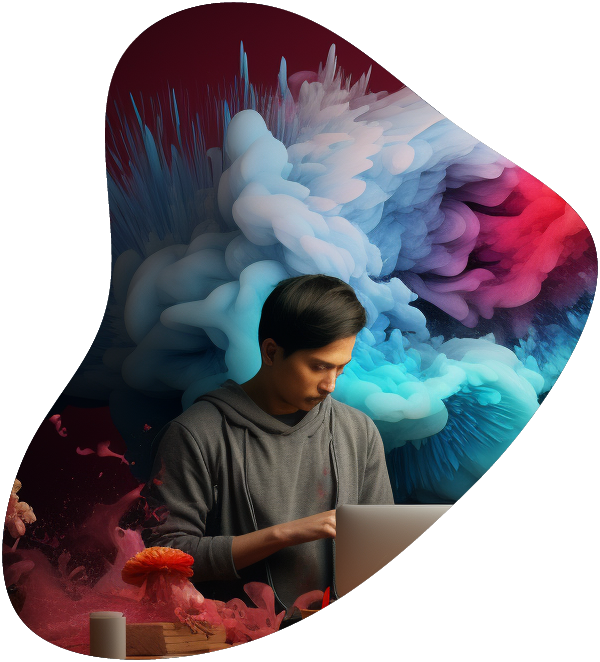What Is Read-Through Cache?
In the realm of software development and data management, caching mechanisms play a pivotal role in enhancing system performance and scalability. Among various caching strategies, the Read-Through Cache stands out

In the captivating realm of cinema, editing film definition transcends its technical connotation, emerging as the unsung hero orchestrating the rhythm of storytelling. Film editing, akin to an invisible conductor, masterfully guides the audience through an emotional symphony. This craft extends far beyond mere snipping and splicing. In this intricate art form, every cut, transition, and fade communicates a profound narrative impact. Embarking on this journey with a sprinkle of wit, we delve into the mesmerizing world of film editing. Here, each frame is a pivotal storyteller, and every second unfolds a unique story, highlighting the critical role of editing in movies and the film industry.
What exactly embodies film editing? At its essence, it involves the careful selection and combination of shots to weave a cohesive and compelling narrative tapestry. Picture film editing as cinema’s culinary art, akin to a chef expertly blending ingredients to craft a delectable dish. In this context, an editor harmonizes scenes to create a cinematic masterpiece. The definition of film editing surpasses the basic mechanics of cutting film. It’s an intricate dance of timing, rhythm, and, above all, storytelling. This is why editing is vital in film – it possesses the power to elevate or diminish the narrative’s impact, making it a pivotal element in the filmmaking process [1].

From mastering editing software to understanding the nuances of visual storytelling, this series is designed to equip aspiring video editors with the tools and insights needed to excel in this dynamic and creative field.
Exploring the types of film editing is akin to venturing through a vast, all-you-can-edit buffet. This realm offers an array of styles, each with its distinct aesthetic and narrative approach. For example, continuity editing focuses on creating a seamless narrative flow, maintaining a consistent sense of time and space. This style is crucial in preserving the film’s illusion of reality. Alternatively, montage editing embarks on a more imaginative route, piecing together varied shots to communicate broader concepts or the passage of time. This approach often infuses a film with deeper thematic layers.
Then we have graphic editing in film, where visual elements are meticulously curated to forge striking, often symbolic, contrasts. This style is particularly notable for its ability to convey complex ideas through visual metaphor, adding a layer of depth to the film’s narrative structure. Each editing style imparts a unique flavor to the cinematic experience, reflecting the diverse techniques and creative visions that define the art of film editing.
Ever wondered how to make edits of movies? The process of editing a movie is a meticulous blend of technical prowess and creative vision. It starts with assembling shots into a rough cut, a raw, unpolished version of the final product. This is where the magic begins. Each shot, each frame, is scrutinized and woven together to form the initial tapestry of the film’s narrative.
Film production and editing have been revolutionized by digital advancements, introducing new dimensions to this intricate process. These modern tools have made editing more efficient and versatile, yet the foundational principles of storytelling remain unchanged. The editor’s role is pivotal, as they sculpt the pacing and rhythm to evoke the intended emotional response from the audience. Whether it’s a high-octane blockbuster or a nuanced indie film, the editing shapes the viewer’s experience, subtly guiding them through the narrative’s ebb and flow.
The interplay between cinematography and editing is akin to a perfectly choreographed dance. Cinematography is the art of capturing visual elements – the raw materials of a film. Editing, on the other hand, is the art of refining and arranging these elements into a cohesive narrative. This synergy is essential in filmmaking, as it determines how effectively a story is told.
Cinematography editing is a delicate balancing act. It involves choosing the best shots and angles that not only look visually stunning but also serve the narrative purpose. This aspect of editing underscores its importance in film – it’s about making choices that enhance the storytelling, ensuring that every visual element aligns seamlessly with the director’s vision. The editor, in collaboration with the cinematographer, ensures that each scene transitions smoothly, maintaining the film’s visual continuity and narrative coherence.
Discussing the importance of editing in film unveils the hidden mechanisms that drive cinematic storytelling. Editing is often described as an invisible art because of its subtle yet profound impact on how a story is perceived and experienced. This craft holds the power to manipulate time, space, and emotions, shaping the viewer’s journey through the film.
Effective editing can transform a narrative, building tension, suspense, and emotional depth. It’s about more than just assembling shots; it’s about crafting a rhythm that resonates with the audience. Different types of editing in film bring varied techniques and perspectives to storytelling. From the classic continuity style to more avant-garde approaches, each editing style offers unique ways to engage and captivate the audience. This diversity in editing styles enriches the filmmaking landscape, allowing stories to be told in innovative and impactful ways.
The history of editing in movies is a tapestry of technological and creative milestones. From the early days of physical film splicing, where editors physically cut and joined film strips, to the advent of digital editing suites that offer boundless possibilities, the journey has been remarkable. This evolution in film editing reflects not just advancements in technology but also shifts in storytelling paradigms.
Initially, classic Hollywood favored continuity editing, a style that prioritized seamless, invisible storytelling to maintain narrative flow. However, as filmmaking progressed, editors began experimenting with more bold and unconventional techniques. This shift led to the emergence of various editing styles in film, each bringing a unique flavor to the cinematic narrative. Today, editors blend these techniques, crafting stories that are not only visually captivating but also rich in narrative depth and complexity.

From mastering editing software to understanding the nuances of visual storytelling, this series is designed to equip aspiring video editors with the tools and insights needed to excel in this dynamic and creative field.
In wrapping up, the definition of film editing encompasses a fascinating blend of creativity, technical expertise, and narrative acumen. This journey from the initial stages of filming and editing to the final cinematic product is as intricate as it is fulfilling. The art of film editing, often unnoticed by the average viewer, is a crucial element that shapes the storytelling and emotional impact of a movie. As you next settle in to watch a film, take a moment to appreciate this invisible art form, the behind-the-scenes hero that plays a pivotal role in bringing cinematic stories to life.
Film editing is the process of selecting and arranging shots to create a coherent and compelling narrative in a movie. It’s crucial because it shapes the pace, tone, and overall storytelling of a film, impacting how the audience perceives and emotionally connects with the story.
The definition of editing in film has evolved from merely cutting and assembling film strips to a sophisticated art that involves digital technology. This evolution reflects changes in storytelling techniques and technological advancements, allowing for more creative freedom and complexity in film narratives.
Common types of film editing include continuity editing, which aims for seamless storytelling; montage editing, which uses rapid shot sequences to convey broader concepts; and graphic editing in film, where visual elements create symbolic juxtapositions. Each style contributes uniquely to the film’s narrative.
In today’s digital age, movie editing is predominantly done using advanced software and digital editing tools. These tools offer editors immense flexibility in manipulating shots, adding effects, and fine-tuning the narrative flow of a film, enhancing the storytelling process.
Cinematography and editing are considered a dynamic duo because they work in tandem to create the visual narrative of a film. Cinematography captures the raw visual elements, while editing arranges these elements into a coherent story, ensuring that the visual storytelling aligns with the director’s vision.

From mastering editing software to understanding the nuances of visual storytelling, this series is designed to equip aspiring video editors with the tools and insights needed to excel in this dynamic and creative field.
You may also like:
Adobe Premiere Classes : 10 Tips to Master Video Editing
How to Edit Videos for Beginners : From Novice to Pro
Film Editor Career : The Reel Deal on Cutting-Edge Success
Video Editing Lessons for Beginners : Tips, Tricks, and Techniques
Lorem ipsum dolor sit amet, consectetur adipiscing elit. Ut elit tellus, luctus nec ullamcorper mattis, pulvinar dapibus leo.
$49.99 Original price was: $49.99.$16.99Current price is: $16.99. / month with a 10-day free trial
In the realm of software development and data management, caching mechanisms play a pivotal role in enhancing system performance and scalability. Among various caching strategies, the Read-Through Cache stands out
GitHub Marketplace is a platform where developers can discover, share, and use software tools that extend the GitHub workflow. This marketplace is integrated into the GitHub ecosystem, making it a
A Cybersecurity Vulnerability Database is a comprehensive and systematically organized digital repository that catalogs, describes, and ranks cybersecurity vulnerabilities and exposures found in software systems, applications, and networks. It serves
A blade enclosure, also known as a blade chassis, is a critical component in the blade server architecture, housing multiple blade servers and providing them with the necessary power, cooling,
In the realm of computational theory and computer science, NP-Complete (Non-deterministic Polynomial-time Complete) problems hold a fascinating position, representing a class of problems that are at once incredibly complex and
Platform as a Service (PaaS) is a cloud computing model that provides customers with a platform to develop, run, and manage applications without the complexity of building and maintaining the
Database as a Service (DBaaS) is a cloud-based service model that provides users with access to a database without the need to set up physical hardware, install software, or manage
Key-Value Coding (KVC) is a coding technique in computer science that provides a mechanism to access the properties of an object indirectly, using strings to identify properties rather than through
The MEAN Stack is an acronym for a collection of JavaScript-based technologies used to develop web applications. MEAN stands for MongoDB, Express.js, AngularJS, and Node.js. This stack represents a modern
In the realm of Linux systems, particularly those based on Red Hat and its derivatives like CentOS and Fedora, the Yellowdog Updater, Modified (YUM) plays a pivotal role in managing
A build system is a set of software tools designed to automate the process of compiling source code into executable programs, libraries, or other software components. In the realm of
Git Stash is a versatile feature in the Git version control system that allows developers to temporarily shelve (or stash) changes they have made to their working directory so that
ENDING THIS WEEKEND: Train for LIFE at our lowest price. Buy once and never have to pay for IT Training Again.

Get 15 courses covering training on Photoshop, Illustrator, Premier, After Effects and more in this comprehensive training series. Over 80 hours of on-demand video content showing you all the tricks and uses of the Adobe Creative Suite.

Get ready for the updated 220-1201 & 220-1202 exams with our brand-new CompTIA A+ training—designed to help you pass with confidence and start your IT career strong. Access this course and over 2,900 hours of expert-led IT training when you sign up for any of our All-Access Passes. Don’t miss out—enroll now and start learning today!